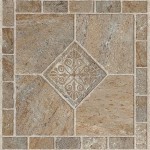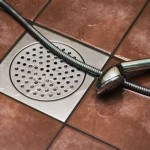How Much Does It Cost to Refinish a Hardwood Floor?
Refinishing hardwood floors enhances the aesthetic appeal of a home, restoring their luster and extending their lifespan. This process involves sanding away the old finish, repairing any damages, and applying new coats of sealant and protective layers. Understanding the costs associated with this undertaking is crucial for homeowners planning to rejuvenate their floors.
The cost to refinish a hardwood floor varies depending on several factors, including the size of the area, the floor's condition, the type of finish chosen, and the labor costs in the homeowner's geographic location. The following information provides a comprehensive overview of the components contributing to the overall expense of refinishing hardwood floors.
Key Point 1: Factors Influencing Refinishing Costs
Several elements directly contribute to the cost of refinishing hardwood floors. These include the square footage of the area being refinished, the floor's existing condition and the extent of necessary repairs, the type of finish selected, and regional labor rates. Each factor influences the final price, requiring careful consideration during the budgeting process.
Square footage: The most significant factor influencing the cost is the area's size. The larger the area, the more materials and labor are required, leading to a higher overall expense. Refinishing a small room, such as a bedroom, will naturally be less expensive than refinishing the entire ground floor of a house.
Condition of the floor: The current state of the hardwood floor significantly impacts the cost. Floors with minor scratches and wear require less intensive sanding and preparation than floors with deep gouges, water damage, or significant warping. Extensive damage necessitates repairs, such as board replacement, which adds to the overall cost.
Type of finish: The choice of finish affects both the material cost and the complexity of the application, thereby influencing the price. Different types of finishes, such as polyurethane (oil-based or water-based), varnish, lacquer, and penetrating oil finishes, vary in cost, durability, and application requirements. Oil-based polyurethane is typically more affordable and durable but emits strong odors and requires longer drying times. Water-based polyurethane is more environmentally friendly, has lower odor, and dries faster, but tends to be more expensive.
Labor Costs: Labor rates vary considerably depending on geographic location and the experience and expertise of the contractor. Areas with higher costs of living generally have higher labor rates. It's important to obtain multiple quotes from different contractors to compare pricing and ensure fair market value.
Other factors: Additional factors such as furniture removal, disposal of old materials, and the use of specialized equipment can also contribute to the overall cost. Highly detailed or intricate floor patterns may also require more labor and thus increase the cost.
Key Point 2: Breakdown of Costs
To accurately budget for a hardwood floor refinishing project, it is crucial to break down the costs into their individual components. These components typically include materials, labor, and any additional services that may be required.
Materials: The cost of materials includes sandpaper, stains, finishes, sealers, and any necessary repair materials like wood filler or replacement boards. The amount of sandpaper required will depend on the floor's condition and the number of sanding passes needed. The cost of the finish will depend on the type and quality of the product selected. High-quality finishes, while more expensive initially, often offer greater durability and longevity, potentially saving money in the long run.
Labor: The labor cost typically constitutes a significant portion of the overall expense. Refinishing hardwood floors is a labor-intensive process that requires skilled professionals to ensure a smooth and even finish. Labor costs encompass the sanding, staining (if applicable), and application of the finish coats. The complexity of the job and the experience of the contractor will influence the labor rate.
Additional Services: Depending on the homeowner's needs and the condition of the floor, additional services may be required. These services could include: Furniture removal and replacement, which some contractors will take on for an additional fee. Subfloor repair is required when the subfloor beneath the hardwood is damaged or uneven. Baseboard or molding replacement, which may be necessary if the existing baseboards are damaged or need to be removed for the refinishing process. Dust containment measures, such as the use of specialized sanding equipment with vacuum systems and plastic sheeting to seal off the work area, may be added to minimize dust and debris.
Average Cost Estimates: While specific costs vary, an average cost to refinish hardwood floors typically ranges from $3 to $8 per square foot. This range includes both materials and labor. For instance, refinishing a 300-square-foot room could cost between $900 and $2400. More complex projects with extensive repairs or specialized finishes may exceed this range. It is prudent to obtain detailed quotes from multiple contractors to get accurate cost estimates tailored to the specific project.
Key Point 3: Budgeting and Cost-Saving Strategies
Effective budgeting and the implementation of cost-saving strategies can help homeowners manage the expense of refinishing hardwood floors without compromising quality. Careful planning, comparison shopping, and considering DIY options can all contribute to a more affordable project.
Obtain Multiple Quotes: Obtaining several quotes from different contractors is essential for comparing pricing and services. When requesting quotes, provide contractors with detailed information about the project, including the square footage, the type of wood, and any specific needs or concerns. This allows them to provide accurate and comprehensive estimates. Review the quotes carefully, comparing the scope of work, materials used, and payment terms.
Consider DIY Options: For homeowners with experience in home improvement projects, refinishing hardwood floors can be a DIY endeavor. Renting sanding equipment and purchasing the necessary materials can save on labor costs. However, refinishing hardwood floors is a skill-intensive task, and improper sanding can damage the floor, leading to costly repairs. DIY refinishing is best suited for those with some experience who possess the patience and attention to detail necessary for a successful outcome.
Choose Cost-Effective Finishes: The type of finish selected significantly impacts the cost of a refinishing project. While high-end finishes offer superior durability and aesthetic appeal, more affordable options can provide adequate protection and enhance the floor's appearance. Oil-based polyurethane is generally more cost-effective than water-based polyurethane. However, it is crucial to consider the trade-offs, such as the stronger odor and longer drying times associated with oil-based finishes. Weighing the cost against the desired performance and aesthetic qualities is essential.
Prepare the Area: Preparing the area before the contractors arrive can save on labor costs. This includes removing furniture, rugs, and curtains from the room. Clearing the area allows the contractors to begin work immediately and reduces the time required for the project. If the homeowner prefers, they can also remove the baseboards themselves to further reduce labor costs.
Schedule During Off-Peak Seasons: Depending on the geographic location, demand for contractors may fluctuate throughout the year. Scheduling the refinishing project during off-peak seasons, such as late fall or winter, may result in lower labor rates due to reduced demand. Contractors may be more willing to offer discounts or negotiate pricing during slower periods. However, it is important to consider the weather conditions during these seasons, as temperature and humidity can affect the application and drying of finishes.
Repair Before Refinishing: Addressing any necessary repairs before the refinishing process can prevent further damage and ensure a smooth and even finish. Repairing water damage, filling cracks, and replacing damaged boards will improve the overall appearance and longevity of the floor. Minor repairs can often be done DIY to reduce costs, but larger repairs should be handled by professionals.
Consider Partial Refinishing: If only certain areas of the floor are damaged or worn, consider refinishing only those sections instead of the entire floor. This can significantly reduce the cost of the project, especially if the damage is limited to a small area. However, be aware that matching the finish and stain of the existing floor can be challenging, and a partial refinishing may result in a slight variation in color or texture.
Ultimately, determining the cost to refinish a hardwood floor requires a thorough assessment of the specific requirements of the project. By considering the factors mentioned above and implementing cost-saving strategies, homeowners can effectively budget for this investment and restore the beauty and value of their hardwood floors.

Cost To Refinish Hardwood Floor Refinishing Fixr

Cost To Refinish Hardwood Floors Sandless In Seattle

Cost To Refinish Hardwood Floor Refinishing Fixr

Hardwood Floor Refinishing Cost Urban Customs

What Is The Cost To Refinish Hardwood Flooring

How Much Does It Cost To Refinish Hardwood Floors In 2025

The Cost To Refinish Hardwood Floors 7 Things You Need Know

How Much Does It Cost To Refinish Hardwood Floors In Westchester

Hardwood Floor Refinishing Cost Prices 2024

Cost To Refinish Hardwood Floor Refinishing Fixr








